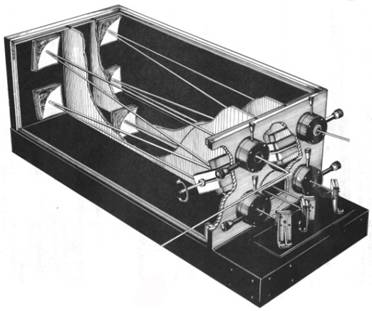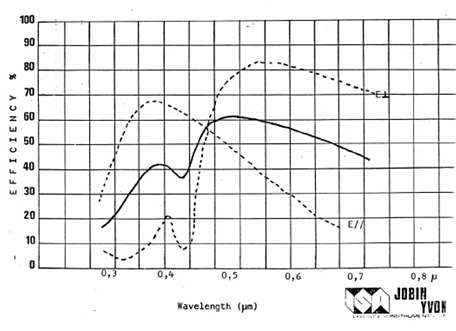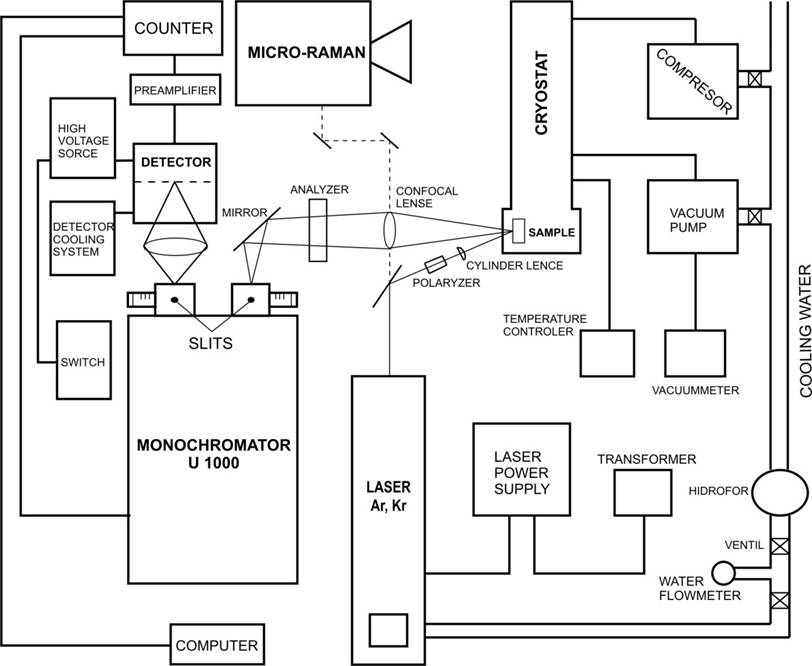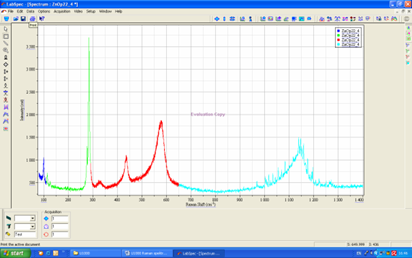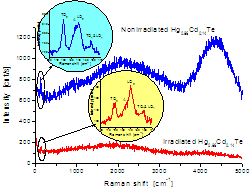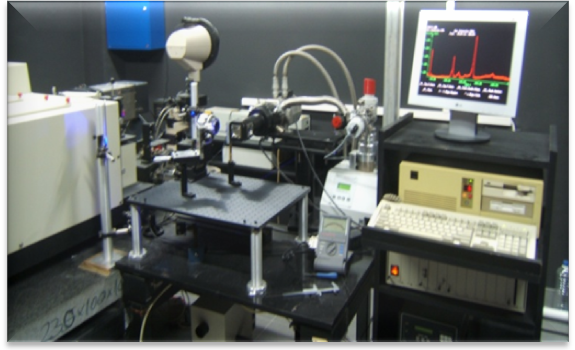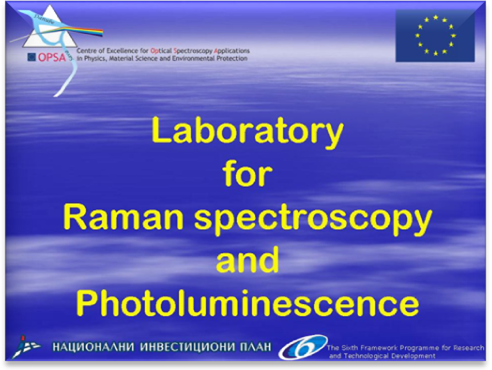
Laboratory for Raman scattering spectroscopy and photoluminescence is equipped with double grating U1000 Jobin Yvon monochromator, Ar, Kr, He-Ne and He-Cd ion lasers, and Peltier effect cooled photomultiplier (model RCA 31034A) as a detector (single photon counting detection system). For low-temperature measurements (10 K-400 K) there is the Leybold closed cycle helium cryostat. This experimental set-up has an excellent stray-light rejection and allows for the measurements close to the laser line to be made.
Jobin Yvon U1000 Raman spectrometer
The main part of the Raman scattering spectroscopy laboratory is the Jobin Yvon U1000 double monochromator, which contains two holographic 1800 grooves/mm gratings, whose synchronized rotation leads to the light dispersion. The U1000 double Raman spectrometer has a long 2 x 1 m focal length with a high precision drive mechanism. The double additive mode of the monochromator is ideally suited to very high spectral resolution (about 0.15 cm-1 at 579.1 nm - Hg line) and very high stray light rejection (10-14 at 20 cm-1 from the Rayleigh line) applications, allowing the collection of low-frequency Raman spectra down to 2-5 cm-1. The dispersion of the monochromator is 9.2 cm-1/mm (0.243 nm/mm) for 514.5 nm, whereas its quantum efficiency is greater than 40% in the range (440–720) nm.
|
|
|
|
Jobin Yvon U1000 double monochromator |
Quantum efficiency of U1000 gratings. |
After leaving the monochromator, the light enters the detector system consisting of RCA-C31034A photomultiplier (detection system which counts photon by photon) with housing cooled by Peltier element, amplifiers and counters. Ar, Kr, He-Ne and He-Cd ion lasers are used as light sources.
A detailed scheme
of the Raman scattering spectroscopy and photoluminescence experiment is
shown in figure below. The laser spot is focused by the cylindrical or
dichromate lens at the sample surface with a very small angle of
incidence. Such configuration corresponds to the so-called
quasi-backscattering geometry. The laboratory is also equipped with the
helium closed cycle Leybold cooling system, which allows for the Raman scattering
measurements at low temperatures down to 10 K.
|
|
|
|
The spectra acquisition is controlled by LabSpec software, which provides for a choice of measurement spectral range, step and integration time in each step, by taking into account a laser wavelength. An illustration of the Raman spectrum (excited by 442 nm line of He-Cd laser), measured in 4 regions with different resolution is presented in figure down.
|
|
|
|
The U1000 double monochromator allows for simultaneous measurements of
the Raman and the photo-luminescence spectra. As a rule, the
photoluminescence spectra are measured with a lower resolution and a
wider spectral range compared to the Raman spectra. The spectral range
of the instrument depends on laser wavelength (max range is 350-850 nm).
|
|
|
|
Raman (insets) and photoluminescence spectra of Hg0.86Cd0.14Te single crystal |
Raman scattering experiment |
Center
for Solid State and New Materials :: Facilities
:: Laboratory for Raman
scattering and photoluminescence
::
print
